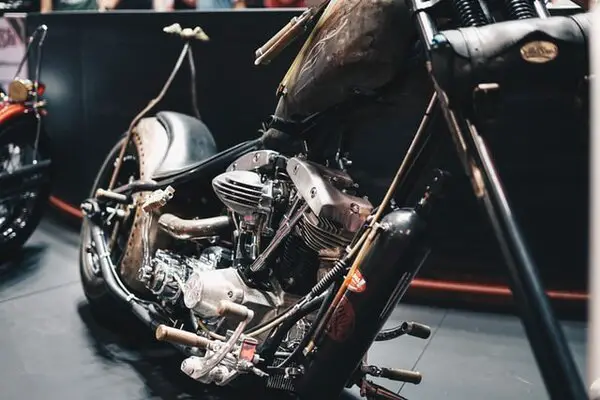Thinking about how to repair a motorcycle radiator leak? Well, you have landed on the right page. Because here we are going to discuss this matter in fine detail and some other associated aspects.
No one wants to suffer from the issue of a leaking radiator. However, you might ask some of your friends who own motorcycles, and they will tell you all the horror stories about it.
Therefore, it’s better to be prepared and get the problem sorted out before it becomes a problem. Otherwise, you will have to deal with some serious coolant leaks that will destroy your entire engine and raise the repair costs significantly.
Some people ask, can you continue to ride your bike if you have found out that the radiator is leaking? Well, you need to immediately stop if you have found a leak there and take measures to stop this leak. In this guide, we will guide you on doing that exactly, so keep reading further.
How Do These Leaks Happen?
You might be thinking, how does this leak occur in the first place, even with all the repair and maintenance? Well, this leak can occur in several different places. And before you get to the “how to repair a motorcycle radiator” part, you have to know what can cause it.
Leakage on the radiator

The leak can occur in the radiator itself, and the cause here is rusting and corrosion on the core of this component. With the rusting, the coolant begins to leak. If this leak is moderate to major, then you will have to replace your radiator. However, a leak will continue and won’t stop until you resolve the issue or the fluid empties. Now, this can either be slow or fast. So, leaks can vary in severity.
Leaks in the lines or hoses
Leaks can also occur in lines or hoses as well. Any cracks or holes developing in the rubber hoses for the coolant in your engine will allow the fluid to leak. If these hoses and lines are pretty old, then they will become more prone to leaks. This is because, with time, these lines began to brittle and start to crack.
Leakage in the drain plug
Almost all of these radiators come with a drain plug which is a hand screw that is made of plastic. These plugs are made pretty cheaply and may wear out or break over time. They might end up breaking if you turn them too tight with your bare hands.
Leakage at connection points
If those connection points like the hose clamps get loose or they break, any pressurized coolant or fluid can seep out and cause a leak. They might end up being entirely popped off if they are loose enough. And this might cause a significant coolant leak.
If you have found any of these leaks in or around your radiator, you will have to make sure your engine is cool before starting with the repair work. It is essential because when the coolant gets hot in your engine, it becomes pressurized, and it can cause some serious burns if it gets in touch with your skin.
Overheating engine
Another reason here is the overheating engine. With the overheat, the coolant becomes too pressurized and causes leakage in the radiator cap. There might be a leakage in the coolant reservoir as well if your bike has one.
If you have noticed that the leakage is coming in front of the cap, then don’t remove the cap while the engine is running. Instead, allow the bike to cool down at least for half an hour and then open the cap.
You will have to tighten the hose clamps if they are loose and replace them if they are corroded. Also, any weeping or split hoses have to be replaced and prevent any tight bends from occurring because they can block the flow of the coolant in the radiator.
Do Radiator Leaks Have Any Colors?

You might be thinking, what is the color of a radiator leak? In other words, how to identify if a leak is occurring from the radiator? The leak is going to depend upon the color of the fluid or the coolant that has been used for the bike model.
If the bike model is old, it will have a green coolant and a green leakage. Some modern bike models have different colored coolants in them. These may include blue, pink, or orange.
You have to handle the coolant with care because it is poisonous to both animals and humans. So, don’t think about ingesting it for any reason. It can also harm the waterways and the environment. However, if you see the leak of these colors from your bike, you immediately need to find the leak source and fix it straight away.
Solutions for Coolant Leaks
Prevention is better than cure so, what needs to be done to prevent a coolant leak? The answer to this question is pretty simple. First, you have to keep the coolant as clean as possible. This is because a clean coolant will keep your bike cool, and it will reduce any rusting or corrosion within your radiator.
Over time, the inhibitors that are there in your coolant tend to break down. The coolant mixture also has some water that can corrode the aluminum and copper radiators, and this can cause a leak.
You will need to follow the instructions provided in your owner’s manual to change the coolant. After that, you have to change it every 5 years or 30,000 miles, whichever comes first. A flush after that much period is going to detoxify your bike’s cooling system.
There is no difference in changing your oil or coolant. The only difference is that coolant changes occur after a long period.
Still, some leaks are pretty tough to determine and even access. And in such a scenario, you will have to seek professional assistance. The color of the leak will tell you that it is from your radiator.
How to Repair a Motorcycle Radiator – Step-by-Step
So, how to repair a motorcycle radiator now that you have found the issue and are certain about it? Primarily, there are two ways of approaching this issue. You can either weld the leak, or you can go for epoxying it. The objective here is to fill the hole or crack. The best solution out of the two is going to depend upon where the leak has occurred.
Step 1 – Taking the radiate out from its fitting

The first thing you’ve got to do is make sure your engine is cool before you even think about touching it. This is important because if you try to open the radiator, it will contain a pressurized coolant.
This coolant will be pretty hot, and you might end up spewing some of it on your face or skin, which can be pretty dangerous. So, make sure to wait for at least half an hour after you have turned the engine off. Of course, if you live in a hotter climate or during the summer days, you can wait for up to an hour for this as well.
Step 2 – Finding the leak

The first step you need to take is to find the leak. And you can do so by submerging the radiator in water and pressurizing it. You can pull this off pretty conveniently as you will have to seal on one of the outlets and inlet holes using clams and connect the outlets.
Keep in mind to connect a long tubing piece to connect with the remainder of the outlet. If you have a large type of utility sink, it will make things pretty easier. Submerge the sink in water and blow through its long hose to create pressure.
Better to shake the radiator and get rid of any air bubbles in the cooling fins to make sure that you get to the leak accurately. If there is a leak, the steady stream of bubbles will come out from there. You might have to flip the component over to get to the location exactly.
Step 3 – Determining the nature of the leak and its solution
The next step of how to repair a motorcycle radiator leak involves determining the nature of the leaks and their location and deciding which fix you need to go for. Most of the leaks originate from the cores that connect the bottom and top of the radiator.
Such leaks near the cores cannot be welded because the aluminum around this section is thin and will crystallize due to the welding process. If the leak is due to an object punching into its core, your radiator is not fixable.
Welding can be done where the aluminum is thick, and this is usually around the sides at either the top of the component or its bottom. But you will still have to be very careful during the welding process.
The area that is right next to the core at both sides of the radiator can be epoxied. And this is usually the way to go if you have no experience with welding.
Step 4 – Cleaning the area under consideration
After finding the leak, you will have to clean it thoroughly and then if the crack is right on the core, then wet it, and if it’s just under the core, then epoxy it. In both cases, you are trying to fill in the hole and prevent any future leaks.
When using epoxy, rely on gravity and draw the epoxy into the hole to create a vacuum. Allow the crack to cue, put the radiator back into the place, and then fill it with the coolant. Your bike is ready to ride again.
FAQ
How can I fix a small hole in my radiator?
If the hole is in the core, you can weld it, and if it is right near the core where the aluminum is thin, you can epoxy it. However, if you blow air into it and there is an object sound in the center, you need to replace your radiator for good.
Can I put an egg in my radiator to fix the leak?
If you are far from a garage and have a leak, you can use eggs to patch your radiator and temporarily plug those leaks. With the heat from the radiator, these egg whites will cook, and pressure will force them into the holes. This will temporarily fix the leak, and you can take it to your garage for repair.
Can I put black pepper into the radiator to stop the leak?
Black pepper will play a similar role in stopping the leak, just like the egg whites. The tiny particles will travel to the leaking area, and they will expand and seal the leakage. Black pepper doesn’t deteriorate and will keep things sealed till you repair it in your garage.
Conclusion
There you have it. Now you know how to repair a motorcycle radiator. You can easily manage the fix on your own, but you will have to be careful in precisely locating the leak.
Leakage in your radiator can occur at different places, and this is the primary issue that you have to deal with when fixing up your radiator. Just make sure that the engine is not hot and allow your bike to cool down for at least half an hour before you even get close to the radiator.


